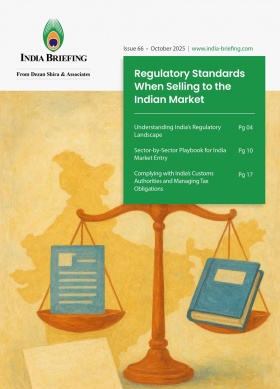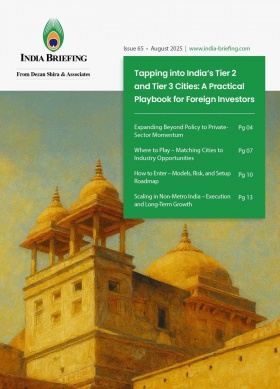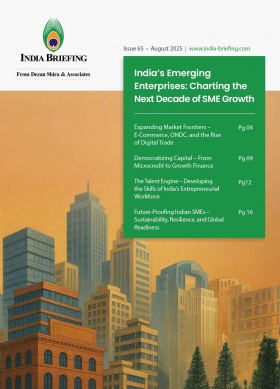Copyright and Trademark Protection in India: Why It Matters for Businesses
In this article, we explain how copyright and trademark laws in India protect creative works and brand identity. Learn the key differences, legal requirements, and practical strategies for businesses to safeguard intellectual property, enhance market credibility, and expand both domestically and internationally.
In India’s innovation-driven economy, intellectual property (IP) has become a crucial strategic asset for businesses, startups, and creators. IP encompasses a range of legal protections, such as copyright, trademark, patent, industrial design, and geographical indication, each safeguarding different types of intangible assets.
Among these, copyright and trademark are the most widely used and vital for protecting creative works and brand identity. While copyright safeguards original expressions like books, films, and software, trademarks protect the distinctive names, symbols, and designs that define a business’s market presence.
For enterprises across sectors such as technology, design, entertainment, or manufacturing, IP protection ensures long-term value creation, brand recognition, and competitive advantage both domestically and internationally.
Understanding India’s copyright framework
Definition and legal basis
Copyright in India is governed by the Copyright Act, 1957, which grants creators exclusive rights to control the use, reproduction, and distribution of their original works.
Importantly, copyright protection arises automatically once a work is created and fixed in a tangible form (e.g., written, recorded, or saved digitally). Registration is not mandatory, but it is strongly recommended, as it serves as prima facie evidence in case of legal disputes.
Scope of protection
Copyright applies to a broad range of works, including the following:
- Literary works (books, articles, computer code)
- Artistic works (paintings, architecture, photographs)
- Musical and dramatic compositions
- Cinematograph films and sound recordings
- Software and databases
The Copyright Office, under the Department for Promotion of Industry and Internal Trade (DPIIT), oversees registration and enforcement.
Rights conferred and duration
Copyright provides two main categories of rights:
- Economic rights allow the creator to reproduce, distribute, adapt, and communicate their work to the public for financial benefit.
- Moral rights ensure the creator is properly credited and that their work is not distorted or misused.
Duration
- For literary, musical, and artistic works: Lifetime of the author + 60 years after death.
- For films, sound recordings, and anonymous/pseudonymous works: 60 years from the date of publication.
Ownership and limitations
Ownership typically rests with the creator unless the work is done under employment or commission.
Section 52 of the Act provides “fair dealing” exceptions permitting limited use for:
- Education or private study
- Criticism, review, or news reporting
- Judicial proceedings or research
- Parody or satire
These provisions balance creator rights with public access to knowledge.
Understanding trademarks in India
Definition and purpose
A trademark, under the Trade Marks Act, 1999, represents a company’s commercial identity. It can include a word, name, logo, sound, color, or packaging design that distinguishes goods or services from competitors.
Regulatory oversight for trademarks
Trademark registration is managed by the Controller General of Patents, Designs and Trade Marks (CGPDTM) under the Ministry of Commerce and Industry. While not mandatory, registration provides stronger nationwide protection compared to common-law “passing off” remedies.
Steps in trademark registration
1. Conduct a pre-filing trademark search to confirm uniqueness.
2. File the application under the relevant Nice Classification (45 classes):
- Classes 1–34: Goods (e.g., chemicals, electronics, apparel)
- Classes 35–45: Services (e.g., business consulting, education, hospitality)
3. Undergo examination and publication for public opposition.
4. Upon approval, receive the registration certificate.
Once registered, the trademark owner holds exclusive rights to use the mark for specified goods or services and can legally enforce those rights.
Duration, renewal, and limitations
- Validity: 10 years from registration, renewable indefinitely every 10 years.
- Grounds for refusal: Deceptive, generic, or immoral marks.
- Well-known marks, such as Tata, Nike, and Coca-Cola, enjoy extended protection across unrelated sectors.
- Continuous use and timely renewal are essential to retain rights.
| Key Differences Between Copyright and Trademark in India | ||
|
Aspect |
Copyright |
Trademark |
|
Governing law |
Copyright Act, 1957 |
Trade Marks Act, 1999 |
|
Nature of protection |
Protects original expressions—books, films, music, software |
Protects brand identifiers—names, logos, slogans, symbols |
|
Primary purpose |
Encourages creativity and controls reproduction/distribution |
Prevents consumer confusion and protects brand identity |
|
Who benefits |
Writers, artists, musicians, developers |
Businesses, manufacturers, and service providers |
|
Creation vs. registration |
Arises automatically; registration recommended |
Registration required for full statutory protection |
|
Duration |
Lifetime + 60 years |
10 years, renewable indefinitely |
|
Territorial scope |
Valid in India and Berne Convention countries |
Territorial; extendable via Madrid Protocol |
|
Ownership |
Creator or employer (if work-for-hire) |
Business or proprietor using the mark |
|
Enforcement |
Injunctions, damages, takedown notices |
Injunctions, damages, destruction of counterfeit goods |
|
Exceptions |
Fair dealing for education, criticism, research |
Honest or descriptive use that doesn’t mislead consumers |
|
Overlap example |
A logo as an artistic work |
The same logo registered as a brand mark |
|
Commercial impact |
Adds creative and licensing value |
Builds brand loyalty and investor confidence |
Protecting your IP rights in India
Copyright protection
- Fix and register your work through the Copyright Office online portal. Click here: www.copyright.gov.in
- Use copyright notices, e.g., © 2025 [Name/Company].
- Monitor and enforce through online tracking and cease-and-desist actions.
- Monetize via licensing, publishing, or franchising opportunities.
Trademark protection
- Conduct a pre-filing search using the IP India Public Search tool.
- File early and maintain use to preserve goodwill.
- Renew every 10 years and monitor for infringements, especially online.
- Expand internationally through the Madrid Protocol for multi-country protection.
CLICK HERE TO KNOW MORE: Intellectual Property Rights in India: Laws and Procedures for Registration
Practical insights for businesses
For businesses operating in India’s increasingly innovation-oriented economy, integrating IP protection into corporate strategy is a necessity. Companies should begin by identifying and cataloguing all creative and brand assets, such as software, product designs, marketing materials, and trade names, to determine which require copyright or trademark protection.
Copyright registration is especially valuable for enterprises in digital, media, and technology sectors, where original content, such as apps, websites, videos, and written material, can be monetized through licensing agreements, publishing rights, or content distribution partnerships. On the other hand, trademarks serve as a foundation for building consumer trust and enhancing brand reputation. A registered trademark reinforces authenticity, attracts investment, and helps maintain a company’s competitive identity in crowded markets.
Businesses must also remain vigilant in protecting their assets online. Proactive monitoring across e-commerce platforms and social media channels can prevent misuse and counterfeiting. Many digital marketplaces, including Amazon, Flipkart, and Meta, now offer IP protection tools that allow rights holders to report and act against infringing listings efficiently.
As companies expand globally, they should consider extending trademark protection through the Madrid Protocol, which allows a single application to secure recognition in multiple countries. Copyright, by contrast, already enjoys international recognition across member states of the Berne Convention. Finally, maintaining compliance through regular IP audits, timely renewals, and proper record-keeping ensures the continued enforceability of rights and minimizes the risk of legal disputes.
In short, effective IP management transforms creative and brand assets into long-term business value. It supports licensing revenues, strengthens investor confidence, and enables sustainable expansion in both domestic and global markets.
Outlook
India’s rapidly growing innovation ecosystem, spanning digital media, design, technology, and advanced manufacturing, has elevated intellectual property protection from a legal obligation to a core element of business strategy. India has actively streamlined registration and enforcement processes through initiatives such as the National Intellectual Property Rights (IPR) Policy, modernization of IP offices, and awareness programs by the DPIIT.
In the short term, businesses should focus on registering their most valuable creative and brand assets to prevent misuse and strengthen investor credibility. Over the medium term, developing an integrated IP management framework that includes renewal tracking, licensing opportunities, and enforcement mechanisms can help optimize asset value. In the long run, companies that treat intellectual property as a strategic capital resource—rather than a compliance task—are better positioned to enhance brand equity, attract partnerships, and compete effectively in international markets.
Ultimately, the distinction between copyright and trademark is a strategic foundation for protecting innovation and reputation. Copyright safeguards creative expression, while trademarks preserve brand identity and consumer trust. Together, they form the twin pillars of sustainable business growth and global competitiveness in the modern knowledge economy.
About Us
India Briefing is one of five regional publications under the Asia Briefing brand. It is supported by Dezan Shira & Associates, a pan-Asia, multi-disciplinary professional services firm that assists foreign investors throughout Asia, including through offices in Delhi, Mumbai, and Bengaluru in India. Dezan Shira & Associates also maintains offices or has alliance partners assisting foreign investors in China, Hong Kong SAR, Vietnam, Indonesia, Singapore, Malaysia, Mongolia, Dubai (UAE), Japan, South Korea, Nepal, The Philippines, Sri Lanka, Thailand, Italy, Germany, Bangladesh, Australia, United States, and United Kingdom and Ireland.
For a complimentary subscription to India Briefing’s content products, please click here. For support with establishing a business in India or for assistance in analyzing and entering markets, please contact the firm at india@dezshira.com or visit our website at www.dezshira.com.
- Previous Article Establishing a Trading Company in India
- Next Article Why India is Becoming the Offshore Accounting Hub for Global CPA Firms








